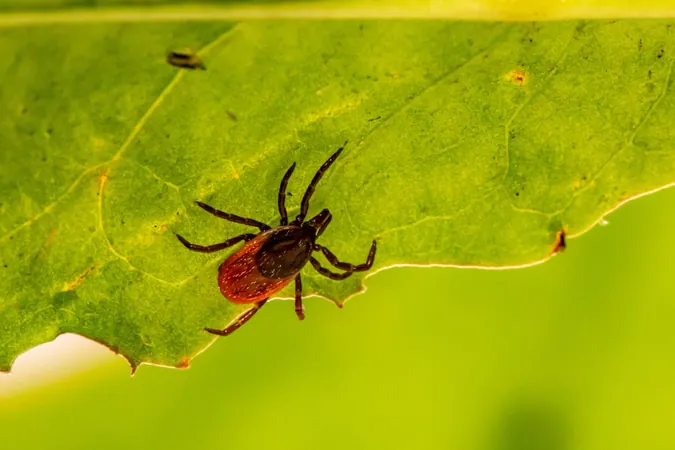
Alarm Bells Ring as Guelph Experiences Surge in Lyme Disease Cases!
2025-03-27
Author: Emma
Introduction
In a startling development, Wellington-Dufferin-Guelph has seen a worrying 30 percent spike in Lyme disease cases in 2024, according to a new report from public health authorities. The region reported 26 confirmed cases of Lyme disease this year, a significant increase from just six cases in 2018 and 20 in 2023.
Lyme Disease Overview
This surge aligns with trends observed across Ontario, raising concerns among health officials about the rising prevalence of this dangerous tick-borne illness. Lyme disease, primarily spread through the bite of blacklegged ticks, can manifest in symptoms ranging from mild fever and fatigue to severe, chronic complications if left untreated. Alarmingly, over 300,000 cases are reported every year in the United States alone, highlighting the seriousness of this public health issue.
West Nile Virus Monitoring
Alongside Lyme disease, the public health units are also keeping a close watch on mosquitoes. This year, there was one reported human case of West Nile Virus (WNV) in the region, although it is suspected that this case was contracted outside of the local area, as all local samples tested negative for the virus. While the majority of individuals infected with WNV experience mild flu-like symptoms, a small percentage can descend into severe, life-threatening conditions such as meningitis.
Impact of Climate Change
The increase in tick and mosquito populations is concerning, given the climate change implications. Rising temperatures and extended summers are expanding the habitats suitable for these vectors. To combat the problem, public health officials are conducting extensive surveillance and applying environmentally friendly larvicides in areas identified as breeding grounds. In 2024, innovative larval surveillance targeted over 104,000 roadside catch basins, alongside additional treatments applied to parks and residential areas.
Public Health Initiatives
The Wellington-Dufferin-Guelph Public Health (WDGPH) has also been proactive in monitoring blacklegged ticks through both active and passive surveillance programs. The latter, which collects public submissions, has seen a remarkable increase in reports, most notably of engorged ticks. Meanwhile, active surveillance efforts, such as tick dragging in conservation areas, have unveiled new tick populations, prompting the need for increased awareness and preventive actions.
Looking Ahead to 2025
Looking ahead to 2025, WDGPH plans to expand these active surveillance efforts. School boards will have the opportunity to borrow tick dragging kits, allowing students to engage in the monitoring process and learn about the risks associated with Lyme disease and other vector-borne illnesses. There is also an exciting initiative launching this spring: a zoonotic and vector-borne diseases hub that will offer localized online resources, public health guidance, and essential information for residents. This hub promises to empower the community with the knowledge needed to protect themselves from emerging health threats.
Conclusion
With climate change exacerbating the spread of diseases like Lyme and WNV, it is crucial for residents to stay informed and take proactive measures to safeguard their health. Are you doing enough to protect yourself from Lyme disease this summer?









 Brasil (PT)
Brasil (PT)
 Canada (EN)
Canada (EN)
 Chile (ES)
Chile (ES)
 Česko (CS)
Česko (CS)
 대한민국 (KO)
대한민국 (KO)
 España (ES)
España (ES)
 France (FR)
France (FR)
 Hong Kong (EN)
Hong Kong (EN)
 Italia (IT)
Italia (IT)
 日本 (JA)
日本 (JA)
 Magyarország (HU)
Magyarország (HU)
 Norge (NO)
Norge (NO)
 Polska (PL)
Polska (PL)
 Schweiz (DE)
Schweiz (DE)
 Singapore (EN)
Singapore (EN)
 Sverige (SV)
Sverige (SV)
 Suomi (FI)
Suomi (FI)
 Türkiye (TR)
Türkiye (TR)
 الإمارات العربية المتحدة (AR)
الإمارات العربية المتحدة (AR)